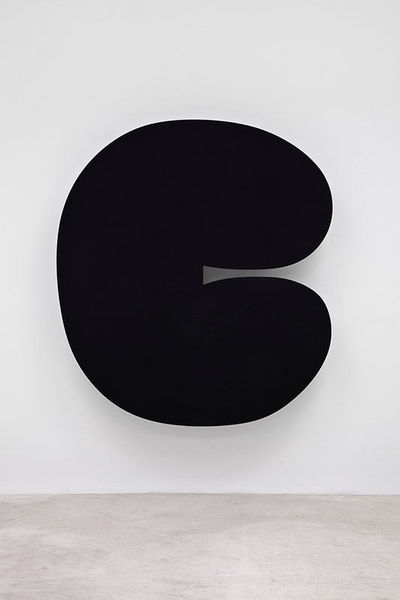Barnes Foundation celebrates first anniversary with first Contemporary art exhibition since 1923
Ellsworth Kelly (American, b. 1923). Sculpture for a Large Wall, 1956–1957. Anodized aluminum, 104 panels, 11 5 x 65 5 x 28 (348 x 1994 x 71.1 cm). Museum of Modern Art, New York, Gift of Jo Carole and Ronald S. Lauder, 526.1998 © 2012 Ellsworth Kelly.
PHILADELPHIA, PA.- This spring, to commemorate its first anniversary in Philadelphia, the Barnes Foundation presents its first contemporary art exhibition in 90 years with a display of wall sculptures by Ellsworth Kelly, who celebrates his 90th birthday in May. On view in the Aileen and Brian Roberts Gallery from May 4 through September 2, 2013, the presentation gathers major sculptures by Ellsworth Kelly, including Sculpture for a Large Wall (1956–1957), on loan from The Museum of Modern Art, New York, in addition to four large sculptures and three studies from other collections.
Composed of 104 anodized aluminum panels, the monumental Sculpture for a Large Wall commands the longest wall of the Roberts gallery, with its rhythmic play of color, form, and light, as well as positive and negative space.
Commissioned in 1956 for Penn Center’s Philadelphia Transportation Building, the work was removed in 1998 when the building underwent renovation and is now in the collection of the Museum of Modern Art in New York. Sculpture for a Large Wall returns to Philadelphia for the first time on the occasion of this exhibition.
“In several ways, this exhibition complements and illuminates the Barnes collection and honors Albert C. Barnes’s commitment to contemporary art. Ellsworth Kelly was born the same year that Barnes introduced modern art to Philadelphia, and Kelly’s career spans the last years of Barnes’s collecting practice to the present day,” Derek Gillman, executive director and president of the Barnes Foundation stated. “We are excited to initiate our program of contemporary exhibitions with a presentation of works by Ellsworth Kelly, a renowned modern master whose oeuvre is intensely focused on line, form, and color, the visual elements that were key to Barnes’s aesthetic theories.”
Ellsworth Kelly has long noted his interest in European modernists such as Paul Cézanne, Henri Matisse, and Pablo Picasso—painters whose works he studied during his years in Paris and New York, and who are also at the core of the Barnes Foundation’s holdings. The powerful wall sculptures in the Barnes Foundation exhibition explore the intersections of art and architecture, form and color, light and shadow, figure and ground, long celebrated in Kelly’s work.
Explaining his emerging style to composer John Cage in 1950, Kelly wrote, “[My] collages are only ideas for things much larger—things to cover walls…. I am not interested in painting as it has been accepted for so long—to hang on the walls of houses as pictures… They should be the wall—even better—on the outside wall—of large buildings.”
Kelly makes no distinction between his paintings and wall sculptures, and the relationship of work to wall and wall to floor is at the heart of his insistently two-dimensional work, whether on canvas or in metal or wood, straight-edged or curvilinear.
Kelly’s abstract work is the expression of interests in line, form, and color that have remained consistent throughout his career. Black White Black (2006), for example, may be traced back half a century to White and Two Blacks (1953), a triptych of equally sized canvases, one of his earliest experiments with the wall. In it, Kelly placed a white panel between two black ones—the black appearing to compress the white. In the 2006 sculpture, almost three times the size of the earlier work, the central white panel, dominant in size and power, seems to push its neighbors away, isolating them against the white wall.
Although Kelly’s work suggests platonic perfection, his abstractions derive from his observations of the real world, natural and man-made. Sketches and collages that he has kept for decades may be points of departure for recent work. Black Form I (2011) seems to reprise a drawing of a white U-shape on a square blue ground that Kelly made in the 1960s. In the 2011 work, the U is rotated ninety degrees to the right and painted black. A flattened sno cone wrapper may be a source of fan-shaped canvases and sculptures in aluminum, bronze, and wood, such as Red Curve (1986) that Kelly has made over the decades. The soaring pitch of Two Curves (2012) suggests Kelly’s long-standing interest in birds and the prints of John James Audubon. Kelly has remarked on the abstract figure-ground relationships in Audubon’s work and on the naturalist’s use of collage in planning his images.
Barnes and Kelly. Although the restraint associated with the installation of Kelly’s immaculate work may seem at odds with the crowded, handcrafted ensembles composed by Albert C. Barnes, recognition of the wall’s possibilities as a field of formal and creative endeavor is common to artist and collector, as is an interest in the relationship of work to wall, object to object, and part to whole. Barnes used his wall installations of paintings, wrought iron, furniture, Native American jewelry, and African sculpture to demonstrate the form, light, line, color, and space that Kelly’s wall art distills.
Ellsworth Kelly (American, born 1923), Red Curve. 1986. Painted aluminum, 120 x 204 x 1/2 (304.8 x 518.2 x 1.3 cm). ©Ellsworth Kelly.
Ellsworth Kelly (American, b. 1923). Black Form I, 2011. Painted aluminum, 80 x 71 3/4 x 4 1/4 in. (203.2 x 182.2 x 10.8 cm). ©Ellsworth Kelly. Photo by Joshua White, courtesy Matthew Marks Gallery, Los Angeles.

/https%3A%2F%2Fprofilepics.canalblog.com%2Fprofilepics%2F1%2F0%2F100183.jpg)
/https%3A%2F%2Fstorage.canalblog.com%2F03%2F02%2F119589%2F96711876_o.jpg)
/https%3A%2F%2Fstorage.canalblog.com%2F11%2F31%2F119589%2F94773502_o.jpg)
/https%3A%2F%2Fstorage.canalblog.com%2F20%2F83%2F119589%2F94772815_o.jpg)
/https%3A%2F%2Fstorage.canalblog.com%2F26%2F72%2F119589%2F75604929_o.jpg)
/https%3A%2F%2Fstorage.canalblog.com%2F59%2F60%2F119589%2F26458628_o.jpg)





/http%3A%2F%2Fstorage.canalblog.com%2F17%2F40%2F119589%2F111253289_o.jpg)
/image%2F1371349%2F20240425%2Fob_c453b7_439605604-1657274835042529-47869416345.jpg)
/image%2F1371349%2F20240425%2Fob_59c6f0_440358655-1657722021664477-71089985267.jpg)
/image%2F1371349%2F20240425%2Fob_07a28e_440353390-1657720444997968-29046181244.jpg)